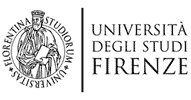Advanced coordination chemistry
Claudio Luchinat, Roberta Sessoli
6 ECTS: 48 hours of lectures
Aims: The course aims at providing the fundamental competences to understand the coordination bond and its effect on electronic and structural properties of compounds containing transition elements and lanthanoids. The student is expected to gain the ability to correlate the molecular and electronic structure to a wide range of properties of relevance for diversified applications in life sciences and material sciences.
Lectures: The lectures will cover basic concepts of symmetry, multielectron atoms, term symbols, crystal field theory, molecular orbital theory, vibronic coupling, mixed valence systems.
The most widely employed techniques for the characterization of coordination compounds will be presented: Optical spectroscopies (UV-vis, IR and Raman); resonance techniques (NMR, EPR).
Reactivity of coordination compounds (inert and labile compounds, mechanisms of substitution, redox processes, etc).
Transition elements and lanthanoids in material sciences: luminescent molecular materials, materials for light harvesting, materials for selective gas storage, molecular switches, materials for information storage and processing.
Transition metal ions in biological systems, roles of metal ions in the origin of life on earth, occurrence of metal ions in different living species, metals and nucleic acids, metalloproteins and metalloenzymes, correlation between electronic structure and biological function. Transition metals and lanthanoids as versatile probes for structural investigation and theranostic applications.


